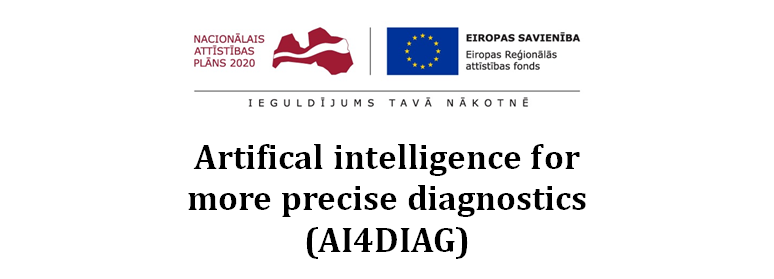
K.Sudars has been working at the EDI since 2006. He has received PhD in Computer Science from University of Latvia, Faculty of Computing and he is co-author of 19 SCOPUS scientific publications focusing on R&D in signal processing, deep learning and computer vision. Currently his scientific interests are covering explainable AI, semantic image segmentation and object detection in images. Also K.Sudars is co-founder at start-up company WeedBot dedicated to AI based weeding for delicate crops.
Scopus Author ID 24512667900
Recent projects
-
 Automotive Intelligence for/at Connected Shared Mobility (AI4CSM) #H2020
Automotive Intelligence for/at Connected Shared Mobility (AI4CSM) #H2020
-
 Artifical intelligence for more precise diagnostics (AI4DIAG) #ESIF
Artifical intelligence for more precise diagnostics (AI4DIAG) #ESIF
-
 Smart non-contact phenotyping of raspberries and quinces using machine learning methods, hyperspectral and 3D images (AKFen) #ESIF
Smart non-contact phenotyping of raspberries and quinces using machine learning methods, hyperspectral and 3D images (AKFen) #ESIF
-
 A Deep Learning Approach for Osteoporosis Identification using Cone-beam Computed Tomography (OSTAK) #ESIF
A Deep Learning Approach for Osteoporosis Identification using Cone-beam Computed Tomography (OSTAK) #ESIF
- New technology to produce hydrogen from Renewable Energy Sources based on AI with optimized costs for environmental applications (HydroG(re)EnergY-Env) #ESIF
Recent publications
- Sudars, K., Jasko, J., Namatevs I., Ozola L., Badaukis, N. (2020). Dataset of annotated food crops and weed images for robotic computer vision control, Data in Brief, 31. doi:10.1016/j.dib.2020.105833
- Sudars, Kaspars, Ivars Namatēvs, and Kaspars Ozols. 2022. "Improving Performance of the PRYSTINE Traffic Sign Classification by Using a Perturbation-Based Explainability Approach" Journal of Imaging 8, no. 2: 30. https://doi.org/10.3390/jimaging8020030
- Vitalijs Komasilovs, Aleksejs Zacepins, Armands Kviesis, Kaspars Ozols, Artūrs Ņikuļins, Kaspars Sudars “Development of an MCTS Model for Hydrogen Production Optimisation”, Processes (2023) (pp.16). https://www.mdpi.com/2227-9717/11/7/1977.
- Ivars Namatēvs, Kaspars Sudars, Artis Dobrājs. Interpretability versus Explainability: Classification for Understanding Deep Learning Systems and Models.
- Edīte Kaufmane, Kaspars Sudars, Ivars Namatēvs, Ieva Kalniņa, Jānis Judvaitis, Rihards Balašs, Sarmīte Strautiņa. QuinceSet: Dataset of annotated Japanese quince images for object detection
- Sarmīte Strautiņa, Ieva Kalniņa, Edīte Kaufmane, Kaspars Sudars, Ivars Namatēvs, Arturs Ņikuļins, Edgars Edelmers "RaspberrySet: Dataset of Annotated Raspberry Images for Object Detection", Multidisciplinary Digital Publishing Institute (2023) (pp. 5). https://www.mdpi.com/2306-5729/8/5/86.
- Kaspars Sudars, Ivars Namatevs, Arturs Nikulins, Rihards Balass, Astile Peter, Sarmite Strautina, Edite Kaufmane, Ieva Kalnina "Semantic Segmentation Using U-Net Deep Learning Network for Quince Phenotyping on RGB and HyperSpectral Images", 27th International Conference "Electronics" (2023). https://ieeexplore.ieee.org/document/10177638.
- Kaspars Sudars, Ivars Namatēvs, Jānis Judvaitis, Rihards Balašs, Artūrs Ņikuļins, Astile Peter, Sarmīte Strautiņa, Edīte Kaufmane, Ieva Kalniņa. YOLOv5 Deep Neural Network for Quince and Raspberry Detection on RGB Images
- Arturs Nikulins, Kaspars Sudars, Edgars Edelmers, Ivars Namatevs, Kaspars Ozols, Vitalijs Komasilovs, Aleksejs Zacepins, Armands Kviesis, Andreas Reinhardt. "Deep Learning for Wind and Solar Energy Forecasting in Hydrogen Production" Energies 17(5): pp.12. https://www.mdpi.com/1996-1073/17/5/1053